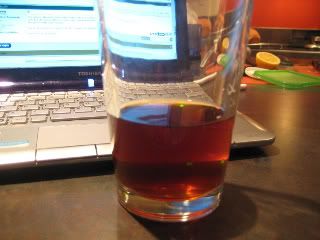I figured I should post results on the bitter I brewed, since I'm drinking it and it will be gone soon. My recipe is still not quite where I want it, but the beer is one of the best I've ever made and the closest I've come to the taste I am after.
I mashed at 149, used the Fullers yeast (1.5 qt starter), and got 67% attenuation. I pitched at 64, let it go to 68, went back down to 64 after 2 days (the yeast kept right on chugging), then crashed to 35 on day 6, after 2 days of no gravity change.
I detect no "green" flavors now, and no diacetyl--I even did the test. BUT, I can only say I've ever detected a buttery or oily taste in beer a few times (esp. in young homebrew or old English imports), so I might not be able to tell well enough. Also this is the first beer I've ever cold crashed, and the youngest I've ever had taste "ready."
The taste is certainly malty, and fruity as heck. It's delicious. But I didn't duplicate the taste I have been after. I got closer for sure, but I think the taste I am after is the taste of a 4-month-old English beer, not a 4-week-old one. If my brewing ever gets ahead of my drinking, I am going to split a batch of bitter and hang on to half for 4 months to test the theory.
All said and done, I think keeping the tail-end of fermentation cool (but not decreasing temp at the bitter end) and taking frequent samples allows you to put the brakes on the ester cleanup when you want, without putting the yeast to sleep prematurely. AND there is a definite connection between the English "deep malty" we all are after and retaining some of the esters that the yeast tend to mop up during the week(s) after primary fermentation has ceased. Who knows about diacetyl?? I may not be sensitive enough to it to comment intelligently.
I am a convert. All my future English beers will finish fermentation at a relatively cool temp, and will be crashed (maybe not so low) as soon as the oily-ness fades from a gravity sample.






